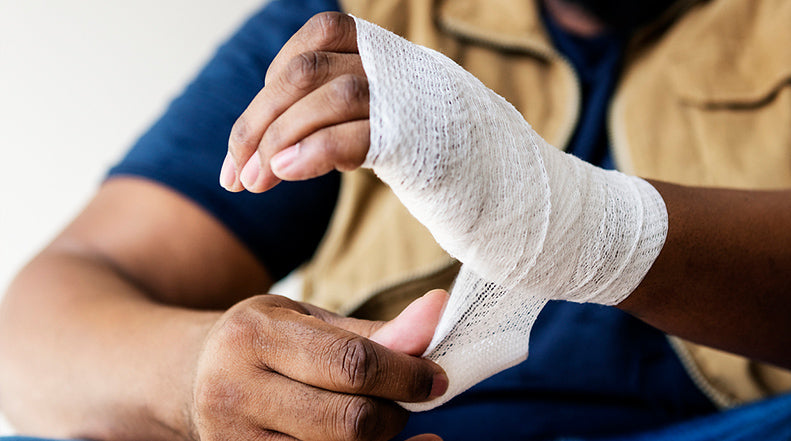What Makes Burn Scars Different?

Do you remember that holiday when you were so overwhelmed with cooking for all your friends and family that you reached into the oven to remove your dish without the oven mitt? Of course you do! Because you still have that mark across your hand from the scorching hot pan or oven rack. You see it every day, and it serves as a constant reminder of that painful injury.
Burn scars are an inevitable complication of burn injuries. While minor burns may heal without leaving a scar, the majority of burns will leave a permanent mark. What’s even worse is that severe burns can lead to functional damage of the affected area. So why are burn scars often much more difficult to treat than other scars? Keep reading to learn why burn scars are different than other types of scars and what you can do to help them heal better and faster.
WHY DO BURN SCARS FORM?
There are three main types of burns: first-, second-, and third-degree. According to Healthline, each degree is based on the severity of damage to the skin and each has a different propensity for scarring. First degree burns are the most minor and appear as red, non-blistered skin. Second-degree burns result in blisters and some thickening of the skin because deeper layers of the skin are affected. Lastly, third-degree burns are the most severe and result in skin that is white and leathery in appearance with widespread thickness.
Like any scar, burn scars form as the result of the body’s natural healing process. As mentioned above, whether or not a burn scar is permanent depends on the depth of the burn. While first-degree burns will usually heal within 7 to 10 days without scarring, all deeper burns (second- and third-degree) heal by scarring. (Indian J Plast Surg. 2010)
The healing of a burn wound is accomplished by either of two process: complete regeneration or substitution. Complete regeneration is only possible if all the specialized cells of the skin are preserved. In this case, burn wounds follow a similar healing process as other injuries to the skin, including cell proliferation, migration, and tissue remodeling. On the other hand, if the skin is burned very deeply (past the point of regeneration), a different type of unspecialized connective tissue forms over the wound. The skin contracts as it heals, forming a type of scar known as a contracture.
THE DIFFERENT TYPES OF BURN SCARS
Burn scars can be divided into three categories: hypertrophic, keloid, and contracture.
While other types of injuries, like cuts and surgical incisions, can result in a keloid or hypertrophic scar, burns are more prone to developing these abnormal scars. This is because burn scars are at high risk for dehydration. Think about it: if an area of skin is destroyed due to a burn, that means your body has lost the barrier that holds water and other important fluids inside. Additionally, if the burn is very deep, the blood vessels and capillaries may be damaged, which can lead to increased capillary permeability to fluids. This means that fluids from the blood vessels will leak out. The higher the percentage of burned skin, the more severe the loss of fluid will be and the greater the dehydration will be. The state of dehydration forces the body to produce more collagen as a way to help support the skin. Unfortunately, when the body produces too much collagen a keloid or hypertrophic scar can form.
Another type of scar that can form after a burn injury is called contracture. Burn scar contracture refers to the tightening of the skin after a second or third degree burn. As the affected area is healing, the surrounding skin pulls together, resulting in a contracture. This type of scarring must be treated as soon as possible because the contracture can result in restriction of movement around the injured area. The standard of care for a burn contracture typically involves surgical excision of the contracture and skin grafting.
HOW NEWGEL+ CAN HELP
Since burns are at high risk for abnormal scarring, it’s crucial to begin treatment early. But with all of the different creams, lotions, salves, etc. on the market that claim to help with burn scars, choosing the right product can be a daunting task. Luckily, NewGel+ makes it easy to choose a safe and effective scar treatment product.
NewGel+ is a collection of silicone gel scar treatment products that come in a wide variety of shapes and sizes to fit any scar. Silicone gel is recommended as the first-line topical scar treatment option by physicians, surgeons, and scar management experts. By providing the injured skin with occlusion, hydration, and a protective barrier, silicone gel helps scars heal faster and also reduces the risk of keloid and hypertrophic scar formation.




Comments